Whatapp:
+278.3675.0634
Work Hours
Monday to Friday: 7AM - 7PM
Weekend: 10AM - 5PM
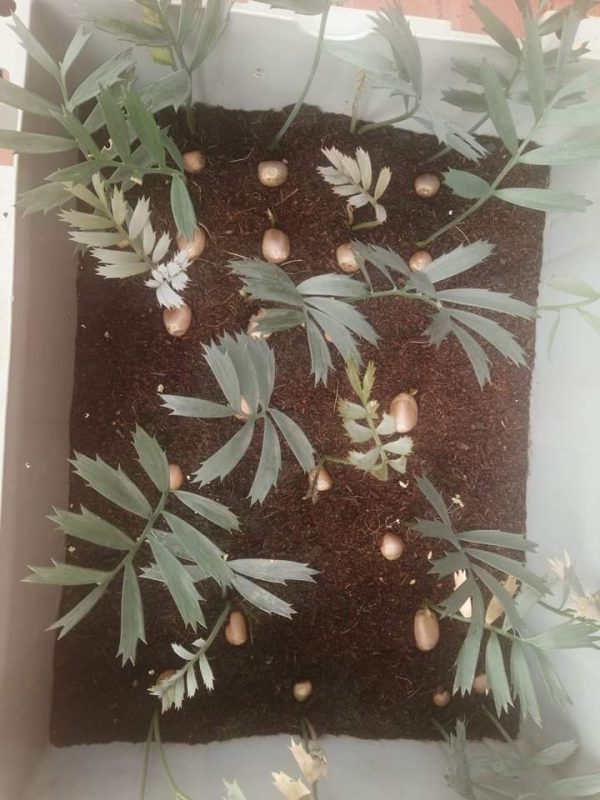
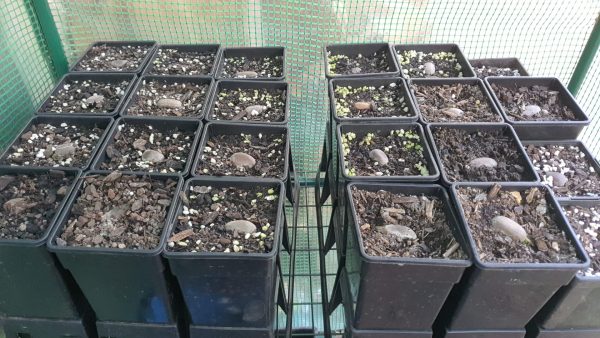
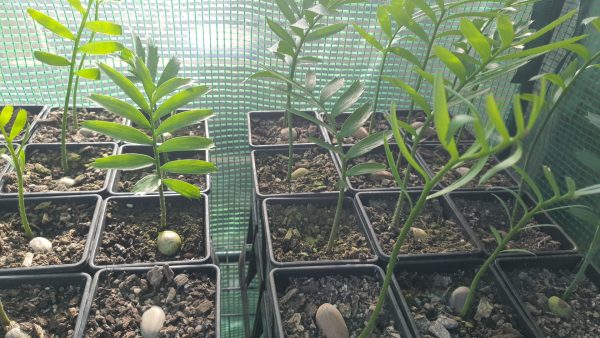
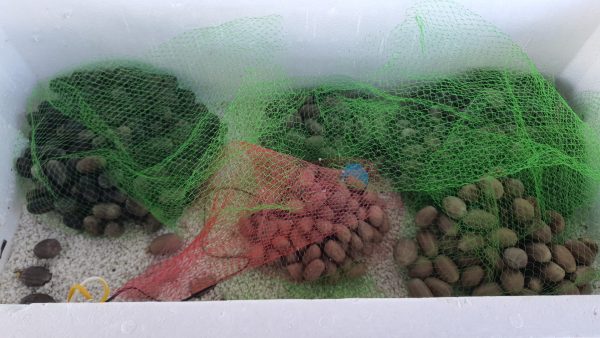
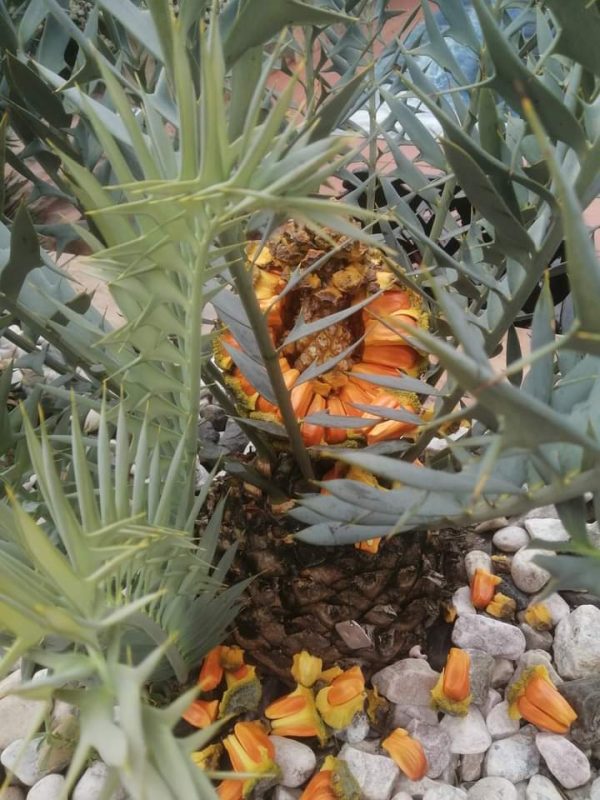
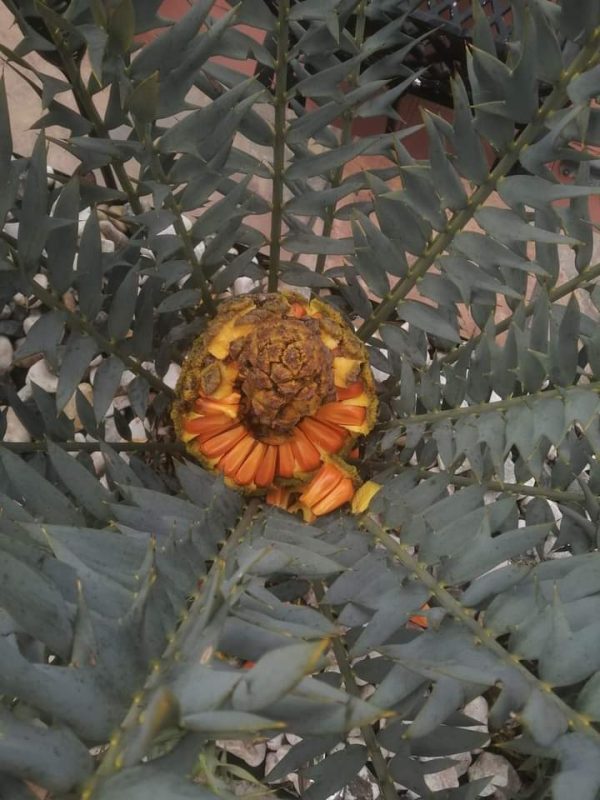
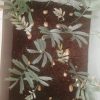
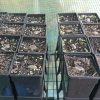
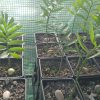
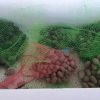
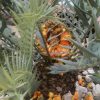
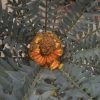
Price range: $8.00 through $25.00
Instock
Encepharlatos Horridus Seedlings, commonly known as the ferocious blue cycad or Eastern Cape blue cycad, is a slow-growing, small to medium-sized evergreen cycad native to rocky outcroppings, slopes, and ridges in the Eastern Cape Province of South Africa. It typically grows up to about 0.9 meters (3 feet) tall and wide, with a short, often partly subterranean trunk and pinnate, spiny, blue-green leaves that are silvery-blue when young and turn blue-green or green with age
The leaves are stiff, spiny, and recurved at the tips, giving the plant a very prickly appearance, which is reflected in its species name horridus (Latin for “prickly”)
It is dioecious, meaning there are separate male and female plants, each producing distinct cones: cylindrical male cones and oval female cones, which are red-brown and appear in summer
The plant grows from thick tuberous roots and often forms dense clusters through suckers or offsets at the base of the trunk, which can be used for vegetative propagation
Seeds are roughly triangular with three flattened surfaces, and seed production requires both male and female plants for pollination
It naturally occurs in arid shrublands and rocky quartzite ridges at altitudes between 100 and 400 meters, in warm climates with average annual rainfall of 250-600 mm and summer temperatures up to 40°C (104°F)
It thrives in well-drained, organically rich soils with moderate moisture but tolerates drought and occasional light frost
For best leaf color, full sun exposure is necessary
In USDA zones 10-12, it can be grown outdoors; in cooler areas, it is grown in containers and must be overwintered indoors in bright, sunny locations
The plant is slow-growing and long-lived, often taking 15 to 20 years to produce cones
Seeds require a resting or “after-ripening” period of 3 to 6 months in a dark, well-ventilated environment before sowing
Before planting, seeds should be soaked in clean water for 24 hours
Germination can take 3 to 6 months, with success rates around 25-50% being typical
Seeds are best germinated in a mix of coarse peat moss and perlite, with bottom heat helping speed germination
Seedlings need good drainage and plenty of room for their taproots to develop; they often lose their previous year’s leaves before new ones emerge
Once seedlings develop a hardened single leaf, they can be repotted into deeper containers with appropriate cycad soil
The best soil conditions for Encephalartos horridus are essential to prevent root rot. The plant naturally grows in rocky, well-drained slopes, so soil that does not retain excess moisture is crucial
A loam or sandy soil mix enriched with pumice, perlite, or coarse sand improves drainage and aeration, mimicking its natural habitat
The soil should be fertile and organically rich, with some compost or biotic matter like oak mulch to provide nutrients and support healthy growth
It prefers a slightly acidic to neutral pH range, avoiding overly alkaline or waterlogged soils
A soil mix designed for cacti and succulents can be beneficial due to similar drainage needs
Full sun exposure combined with this soil type supports optimal growth and leaf coloration
| Feature | Details |
|---|---|
| Native Range | Eastern Cape Province, South Africa |
| Leaf Color | Silvery-blue (young), blue-green (mature) |
| Leaf Structure | Spiny, recurved, up to 1m long, forming dense rosette |
| Growth Rate | Slow |
| Propagation | By seed (slow, genetically diverse) or suckers (faster, clones) |
| Germination Time | 6 months to over a year |
| Soil | Well-draining (sandy, pumice, perlite) |
| Light | Bright indirect (seedlings), full sun (mature) |
| Water | Regular during growth, drought-tolerant when mature, avoid overwatering |
| Conservation Status | Endangered (IUCN Red List), CITES protected |
| Toxicity | Seeds are poisonous |
Encephalartos horridus require patience and careful attention but reward growers with their unique, architectural beauty and rarity
| E.Horridus | Germinated Seeds, Seeds, Seedlings |
|---|
Reviews
There are no reviews yet.